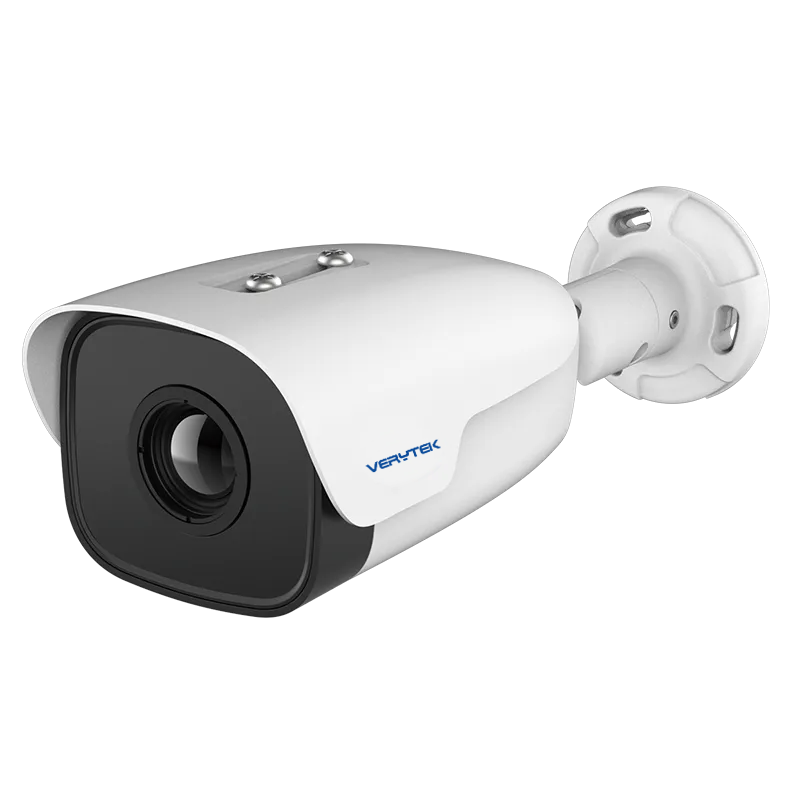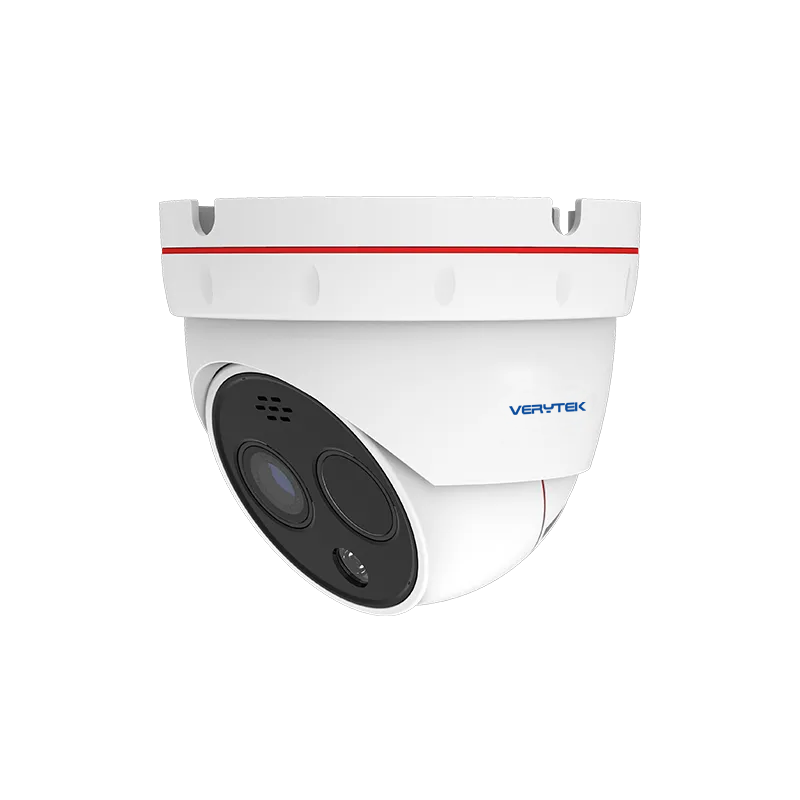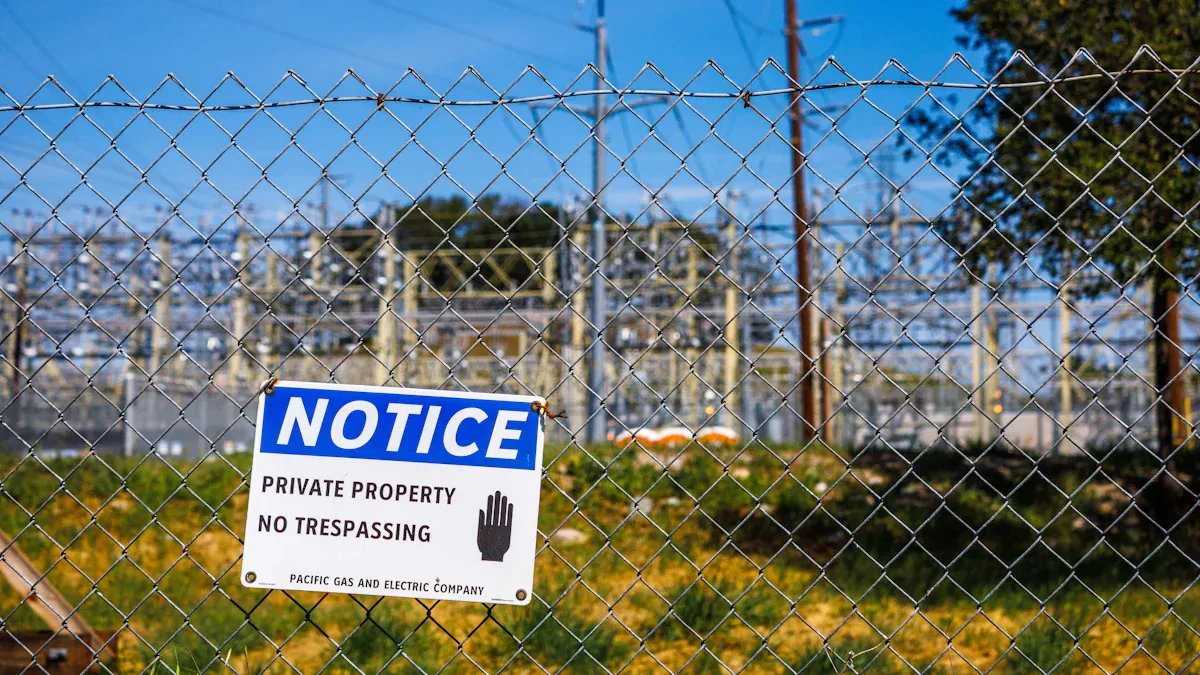
You can make perimeter security simple and safe with thermal imaging. Unlike traditional surveillance, you get early detection and reliable performance in any weather or light.
Feature | Thermal Imaging | Traditional Surveillance |
|---|---|---|
Unaffected by weather conditions | Severely limited by weather | |
Detection Capabilities | Early detection at long ranges | Dependent on visible light |
Cost Efficiency | Fewer cameras needed, reducing costs | More cameras required, increasing costs |
Reliability | Fewer failure points | More potential failure points |
Proactive Security | Early warning across buffer zones | Reactive measures only |
Thermal cameras like the FC460T Thermal Bullet Camera help you reduce false alarms, since they detect heat signatures instead of movement. You can spot threats faster and keep your team safer.
Key Takeaways
Thermal imaging provides reliable security in any weather or lighting conditions, ensuring you can monitor your property 24/7.
This technology reduces false alarms by detecting heat signatures instead of movement, allowing your team to focus on real threats.
Thermal cameras like the FC460T are easy to integrate into existing security systems, enhancing overall effectiveness without major changes.
Proper placement and lens selection for thermal cameras can maximize coverage and minimize blind spots, improving security.
Investing in thermal imaging may have higher initial costs, but it leads to long-term savings through lower maintenance and energy expenses.
Why Choose Thermal Imaging?

Detects in Darkness and Weather
You want a security system that works no matter the time or weather. Thermal imaging gives you this power. Unlike regular cameras, you do not need any light to see what is happening. You can spot people or animals even in total darkness, fog, or light rain. This makes thermal imaging a strong choice for protecting your property at night or during storms.
Thermal imaging cameras see in total darkness, producing clear, crisp images without the need for any light. This makes IR cameras excellent instruments for numerous night vision applications. Although thermal imaging cameras can see in total darkness, through light fog, light rain, and snow, the distance they can see is affected by these atmospheric conditions.
You can rely on thermal imaging to keep watch when other cameras fail. It does not matter if it is pitch black or if there is glare from headlights. You still get a clear view. Here is how thermal imaging stands out:
Feature | Description |
|---|---|
Zero-light monitoring | Thermal cameras can monitor perimeters in complete darkness. |
Weather resilience | They can track intruders through fog, rain, or dense foliage. |
Wide area coverage | Effective for securing large areas like parking lots and airports. |
Enhanced awareness | Improves your ability to spot threats quickly. |
Extreme temperature detection | Detects heat signatures even in harsh conditions. |
Thermal cameras are effective in all weather conditions, including fog, rain, and dust.
Their performance is not affected by low light or glare.
They detect mid and long wave infrared wavelengths, capturing heat emitted by objects, which is not dependent on light.
Thermal imaging systems measure temperature differences, allowing them to detect objects through darkness and environmental barriers.
You can trust thermal imaging to help you see what others cannot. This technology lets you spot intruders, animals, or hazards that would stay hidden from regular cameras.
Fewer False Alarms
You want your security system to alert you only when there is a real threat. Thermal imaging helps you avoid false alarms. Regular cameras often trigger alarms because of shadows, moving branches, or changes in light. Thermal imaging focuses on heat, not movement or light changes. This means you get alerts only when something with a heat signature, like a person or vehicle, enters your property.
The latest thermal cameras use advanced video analytics to improve detection accuracy and reduce false alarms.
On-board analytics help classify objects, so you do not get nuisance alerts from animals or blowing debris.
These systems work well in different lighting and weather conditions, making them reliable for all-day and all-night use.
When you use thermal imaging, you spend less time checking false alarms. Your team can focus on real threats, making your property safer and your security system more efficient.
Thermal Imaging Technology

How It Works
You can rely on thermal imaging to spot threats that regular cameras miss. This technology uses special sensors to detect heat, not light. Every object gives off some heat, even at night or in bad weather. Thermal imaging cameras pick up these heat signals and turn them into clear images.
Key parts of a thermal imaging system include:
Thermal imaging cameras that work day and night, no matter the weather.
Automatic response systems that use video analytics to trigger alarms and alert your team.
Multi-sensor cameras that combine thermal and visible images for better detection.
Both cooled and uncooled thermal cameras, chosen based on how sensitive you need your system to be.
The FC460T Thermal Bullet Camera by Verytek shows how advanced this technology can be. Here are some of its top features:
Feature | Description |
|---|---|
Thermal Imaging Resolution | High-resolution, 12μm pixel pitch thermal detector with various lens options. |
Detection Capabilities | Supports tripwire/intrusion detection and integrated temperature analysis methods. |
Fire Detection Function | Capable of detecting fire, enhancing safety in residential and commercial areas. |
You also get intelligent video analysis, like tripwire and intrusion detection, and the ability to spot fire points quickly. The FC460T works with many security systems, thanks to ONVIF support, SDK, and NVR/VMS compatibility. Its IP66 rating and wide temperature range mean you can use it almost anywhere.
Real-World Applications
You can use thermal imaging in many places to keep people and property safe. Airports use it to watch for intruders and check for fevers. Sports stadiums rely on it to manage crowds and spot unusual heat patterns. Schools use it to monitor perimeters and screen for high temperatures. Office buildings use it to watch doors and check for overheating equipment.
Here are some real-world examples:
Location | Application Description | Purpose of Use |
|---|---|---|
New York Airport | Infrared thermometers screened passengers for elevated body temperatures. | Enhancing security and preventing disease spread. |
Michigan Manufacturing Plant | Improving site security and protecting assets. | |
California Sports Stadium | Infrared cameras monitored spectator areas for security threats. | Enhancing crowd safety during events. |
Illinois Shopping Mall | Infrared cameras monitored parking lots and common areas for suspicious activity. | Enhancing overall security and deterring crime. |
You can see how thermal imaging helps in many settings. It keeps your perimeter secure, helps prevent fires, and makes your site safer for everyone.
Benefits for Security Teams and Owners

Reliable 24/7
You need a security system that works all day and night. Thermal imaging gives you this advantage. It detects heat signatures, so you can see in complete darkness and through fog or rain. You do not have to worry about shadows or changes in light. Your team can spot intruders or hazards at any time.
Thermal cameras operate in total darkness, detecting heat without visible light.
They help you monitor large areas and find intruders, even if they try to hide.
These systems reduce false alarms, so you only get alerts when it matters.
With thermal imaging, you get real-time detection of movement and intrusions. This helps your team respond quickly and keeps your property safe.
Easy Integration
You want your security tools to work together. Modern thermal cameras, like the FC460T, fit easily into your current systems. They support ONVIF standards and work with NVR and VMS software. You can connect them to alarms and access control systems for a complete security setup.
Built-in analytics help you tell the difference between real threats and harmless movement.
You can cover large areas with fewer cameras, saving time and money.
These cameras also help you spot overheating equipment, which can prevent problems before they start.
Advanced analytics alert your team right away if something unusual happens, so you can act fast.
Safer for Personnel
You want to keep your security staff safe. Thermal imaging lets your team monitor perimeters from a distance. They do not need to walk into dark or risky areas to check for threats. The cameras can spot people hiding or moving in the dark, giving you early warning.
Benefit Description | How It Helps Your Team |
|---|---|
Early threat detection from a distance | Reduces the need for staff to enter dangerous areas |
AI-driven alerts for abnormal heat patterns | Minimizes human error and speeds up response |
Real-time monitoring and instant alerts | Lets your team assess situations remotely and act only when needed |
Reliable scanning for heat signatures | Allows for proactive intervention before a breach occurs |
Thermal imaging is also energy efficient and works well in harsh environments. You can trust it to keep working, even in extreme weather.
Deployment Considerations

Placement Tips
You want your thermal imaging cameras to cover your perimeter without missing any spots. Good placement makes a big difference in how well your system works. Here are some tips to help you get the best results:
Place cameras so their field of view runs parallel to your fence or property line. This setup helps you spot movement across the boundary.
Mount cameras at least 4 meters (about 13 feet) high. A higher angle reduces the amount of sky in the image and helps you see more ground.
Make sure each camera is mounted firmly. Stable mounting stops vibrations that can blur images.
Overlap the fields of view when you use more than one camera. Overlapping views help you avoid blind spots.
Pick the right lens for your needs. Longer lenses let you see farther and spot small objects at a distance. Shorter lenses work better for close-up areas.
Think about the field of view. A wide field of view covers more area, while a narrow field gives you more detail for distant targets.
Tip: The FC460T Thermal Bullet Camera offers different lens options, so you can match the camera to your specific coverage needs.
Maintenance and Cost
You want a security system that works all the time but does not cost too much to run. Thermal imaging cameras give you this advantage. They work day and night without extra lights, so you save on electricity. You also do not need to replace bulbs or worry about lighting failures.
You get round-the-clock visibility without needing extra lighting.
Lower electricity costs add up over time.
Less maintenance is needed because there are no bulbs to change.
These cameras can handle tough weather and do not need frequent replacements.
You spend less on ongoing maintenance, which keeps your costs down.
While you might pay more at first for a thermal imaging system, you save money in the long run. The FC460T uses very little power and stands up to harsh conditions. You get reliable security with fewer headaches and lower costs over time.
Thermal imaging gives you a clear advantage in perimeter security. You see reliable detection, fewer false alarms, and improved safety.
Video surveillance now drives 45.6% of security revenue.
Deep-learning with thermal cameras reaches 95% accuracy in identifying people and vehicles.
Nuisance alarms drop by 60% with this technology.
Security experts recommend thermal cameras for dark, wide, or obstructed areas, and for fire prevention.
Place cameras for the best view.
Pick the right lens for your needs.
Choose a power source that fits your site.
Explore advanced solutions like the FC460T to protect your property.
FAQ

What makes thermal imaging better than regular cameras for security?
Thermal cameras detect heat, not light. You can see people or animals in total darkness, fog, or rain. Regular cameras need light and often miss threats at night or in bad weather.
Can thermal cameras like the FC460T work in extreme weather?
Yes! The FC460T works from -40°C to +70°C. Its IP66 rating protects it from dust and water. You can trust it in harsh environments.
Do thermal cameras need extra lighting at night?
No, you do not need extra lights. Thermal cameras see heat, so they work perfectly in complete darkness. You save energy and reduce maintenance.
How do I connect a thermal camera to my current security system?
The FC460T supports ONVIF and works with most NVR and VMS software. You can easily add it to your existing setup without special tools.
See Also
The Importance of Thermal Imaging Cameras in 2025
Utilizing Thermal Imaging Cameras for Rescue Operations in 2025
Vanadium Oxide Thermal Imaging Cameras for Effective Rescues
